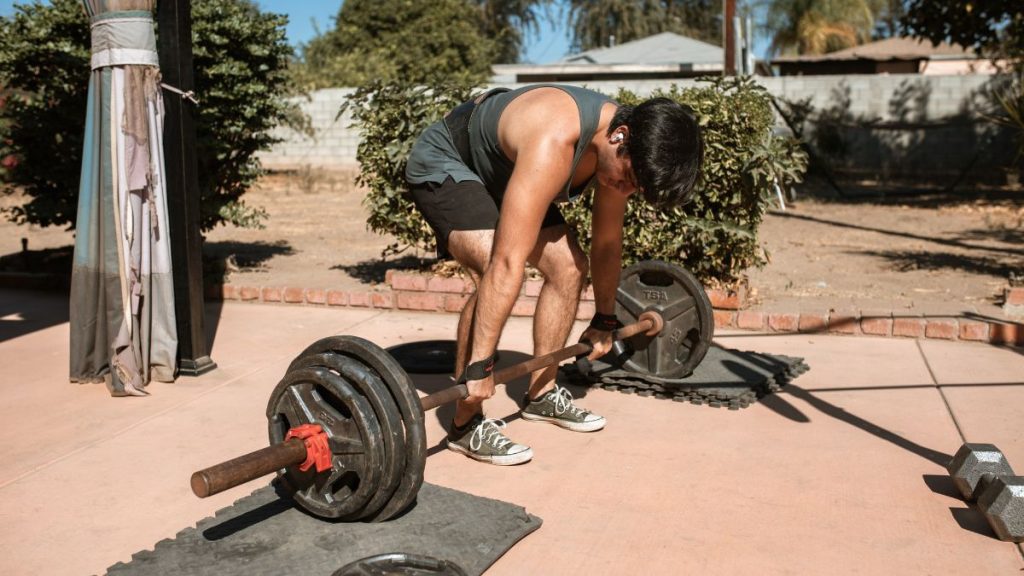Deadlifts are a cornerstone exercise for building back thickness and strength, targeting a range of muscles from the traps to the lower back. As one of the best compound lifts, deadlifts maximize muscle engagement and stimulate hypertrophy. Whether aiming to improve posture, increase muscle density, or support other lifts, deadlifts are essential for achieving a solid, powerful back.
What Muscles Do Deadlifts Target?
Deadlifts are multi-joint exercises that engage several muscle groups, making them practical for overall back development. Here’s a breakdown of the primary muscles engaged:
- Trapezius: Upper and middle traps stabilize the shoulder girdle and add thickness.
- Latissimus Dorsi: The wide muscles on either side of the back are crucial for width and stabilization.
- Erector Spinae: Running along the spine, these muscles give the back a deep, thick appearance.
- Rhomboids: These muscles support scapular retraction, enhancing upper-back strength and density.
How to Perform the Deadlift for Maximum Thickness and Strength
- Foot Position: Stand with feet hip-width apart and toes slightly out.
- Grip: Use a double-overhand or mixed grip, ensuring hands are shoulder-width apart on the bar.
- Back Position: Keep a straight, neutral spine to avoid lower back strain.
- Pulling Technique: Drive through your heels, engage the core, and keep the bar close to your body as you lift it.
- Lockout: At the top, squeeze your glutes and retract your shoulder blades for muscle activation.
Why Are Deadlifts Superior for Back Thickness?
Deadlifts engage the posterior chain—a group of muscles that runs from your calves to your neck. The heavy load during a deadlift recruits a high level of muscle fibers in the back, leading to greater muscle density and thickness. The constant engagement of stabilizing muscles also helps support spinal health and improve posture, which is crucial for strength and aesthetics.
Deadlift Variations for Back Growth
- Conventional Deadlift: The standard form works well for full-body strength and back thickness, especially in the traps and lats.
- Romanian Deadlift: This version emphasizes the lower back and glutes by focusing on the hip hinge movement.
- Sumo Deadlift: With a wider stance, this variation shifts emphasis to the glutes and inner thighs but still significantly engages the back.
- Trap Bar Deadlift: This safer alternative reduces lower back stress, allowing heavier weights to stimulate back and leg muscles.
How Often Should You Deadlift for Optimal Back Development?
To avoid overtraining, incorporate deadlifts into your workout 1–2 times weekly. Given the intensity and muscle recruitment involved, more frequent deadlifting can lead to muscle fatigue and increase injury risk. Ensure each session includes adequate warm-up and that your form remains strict.
Common Deadlift Mistakes to Avoid
- Rounding the Back: One of the most common errors, rounding, can lead to spinal injury. Keep the chest up and spine neutral.
- Improper Grip: Using a too wide or narrow grip can affect balance and reduce back engagement.
- Lifting with the Arms: Deadlifts should be powered by the hips and legs, not by pulling with the arms. Focus on the hip hinge.
How to Combine Deadlifts with Other Back Exercises
Deadlifts pair well with other back exercises, such as rows and pull-ups, for a balanced workout routine. A sample back-focused routine might include:
- Deadlift – 3 sets of 4–6 reps
- Barbell Row – 3 sets of 8–10 reps
- Pull-Up or Lat Pulldown – 3 sets of 10–12 reps
- Face Pulls – 3 sets of 12–15 reps for scapular stability
Benefits of Deadlifts Beyond Back Thickness and Strength
- Improved Core Stability: Deadlifts require a strong core, helping to build endurance and prevent injuries.
- Better Grip Strength: Holding heavy weight increases grip strength, which is transferable to other lifts.
- Enhanced Athletic Performance: Deadlifts improve power and coordination, aiding athletic movements in sports.
Tips for Deadlift Success
- Prioritize Recovery: Recovery is crucial as deadlifts are taxing. Include adequate rest and active recovery strategies like foam rolling.
- Focus on Progression: Gradually increase the load or reps to keep your muscles challenged and growing.
- Supplement with Proper Nutrition: Maintaining a protein-rich diet to support muscle repair and growth for maximum back development.




